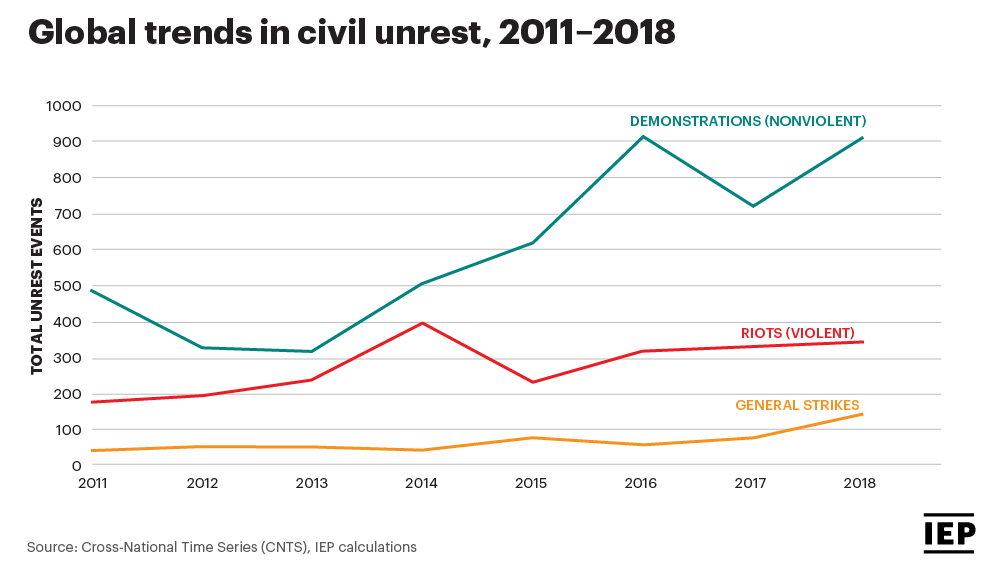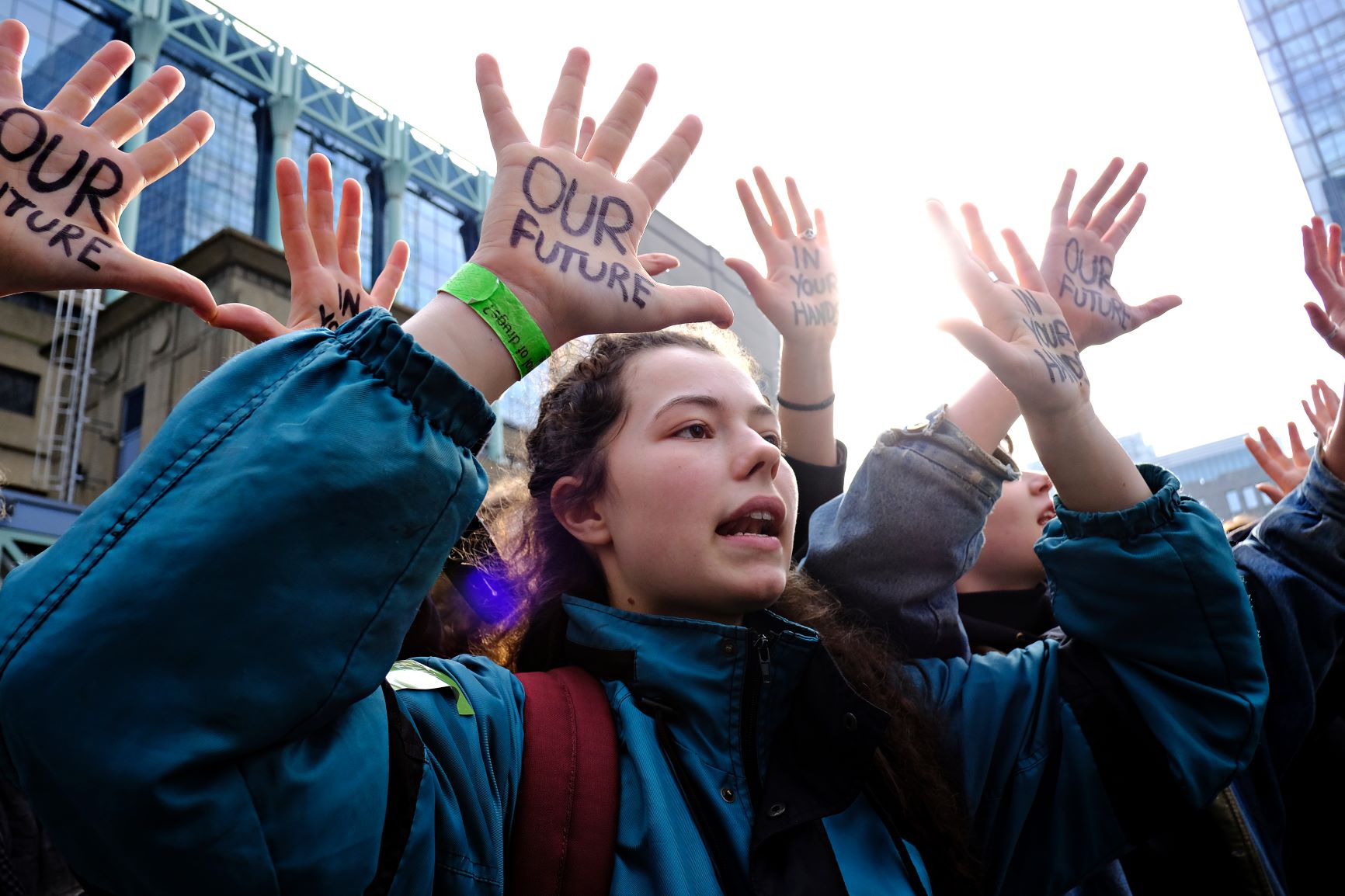Data from the 2020 Global Peace Index shows that civil unrest has doubled over the last decade.
Between 2011 and 2018, the number of both protests and riots roughly doubled, while the number of general strikes quadrupled, from 33 events in 2011 to 135 in 2018.
In most situations, these movements avoid violence. However, both violent and nonviolent demonstrations increased in frequency over the last decade.
Seven of the nine GPI regions had increased levels of civil unrest, with the most violence recorded in places where democratic institutions were weak.

The high level of civil unrest in 2011 shown in the graph reflects the Arab Spring, followed by a decline in the number of protests in 2012. These movements either achieved their goals, governments repressed them, or they escalated into civil wars.
However, total global civil unrest rose above 2011 levels just three years later and has remained above that level since.
Riots did not decline in the years immediately following the Arab Spring, when the number of anti-government demonstrations fell.
The number of riots around the world has increased 282% since 2011.
The trend peaked in 2014, especially in countries with fragile democratic institutions, before plateauing. Since 2016, at least 300 riots occur every year.
